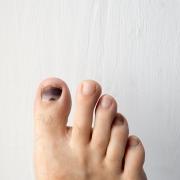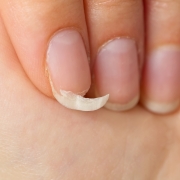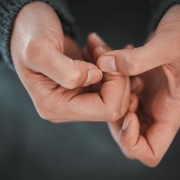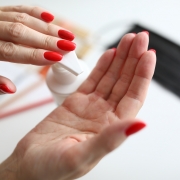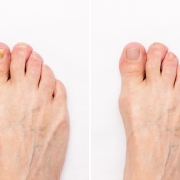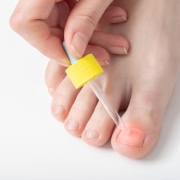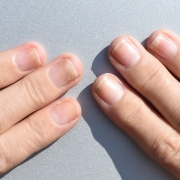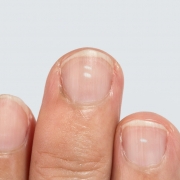toenail infection
One of the annoying and painful complications is toenail infection, which is caused by a weak immune system, lack of care, and improper nail trimming.
Undoubtedly, knowing the factors that cause toenail infection will help the treatment process. It is possible that a toenail infection appears due to the proliferation of bacteria, fungi and viruses.
In addition, one of the effective factors in the occurrence of toenail infection is the improper growth of the nail inside the skin. Indentation of the nail in the flesh of the toe is formed when the corners of the nail next to it grow towards the skin. This complication causes pain in the form of inflammation.
Nail fungus is known as onychomycosis. Nail fungus is a widespread disease that appears as a yellow or white spot on the underside of the toenail. To the extent that the fungal infection becomes deeper, we will face a change in color, destruction of the edges of the nail and greater thickness.
In fact, during skin cuts and nail cracks, the ground is provided for the penetration of infection inside the toenail. If left untreated, toenail fungus can cause permanent damage to a person’s nails. It is better to know that toenail infection is a common phenomenon that is seen in abundance in people with diabetes and a weak immune system.
In people with diabetes and people with a weak immune system, due to the use of special drugs, there is a possibility that the infection will spread from the toenails and enter different parts of the body.
In fact, diabetes causes a decrease in nerve support in the foot and interferes with blood circulation. Therefore, a person is always exposed to bacterial skin infection or cellulitis.
Therefore, if you are diagnosed with a toenail infection, see a doctor as soon as possible.
Factors involved in the formation of toenail infection
Various fungal organisms in the body cause toenail infection. One of the fungi involved in the formation of infection is called Dermatophyte.
Along with fungi, yeasts, molds and molds are able to multiply and cause infection in toenails.
The occurrence of toenail infection increases during weakness in the body’s immune system and weakness in blood circulation to the lower parts of the body.
It is better to know that foot infection cannot be spread from one person to another.
One of the factors that causes the nail to sink into the flesh of the finger is doing sports activities that repeatedly put pressure on the foot. Sports such as football, ballet and kickboxing increase the possibility of ingrown toenails.
Ways to prevent toenail infection
One of the ways to prevent toenail infection is to change socks early. Anti-sweat and absorbent socks also play a significant role in reducing foot infections.
The best way to keep your toenails healthy is to wash your hands and feet regularly. Note that you should use moisturizing creams after washing.
Cut nails with nail clippers at regular intervals. Then at the end, disinfect the nail clipper with detergent.
Using the right shoes also plays a significant role in reducing toenail infections.
The most suitable shoes for toenail health are shoes made of breathable leather.
Undoubtedly, using old shoes with the accumulation of bacteria causes infection. Therefore, avoid wearing old shoes and, if necessary, clean the inside of the shoes with disinfectants or antifungal powders before wearing them.
Avoid using nail polish and sticking artificial nails.
Do not walk barefoot in wet and public places.
In pedicure and manicure salons, pay attention to the disinfection of usable tools.




